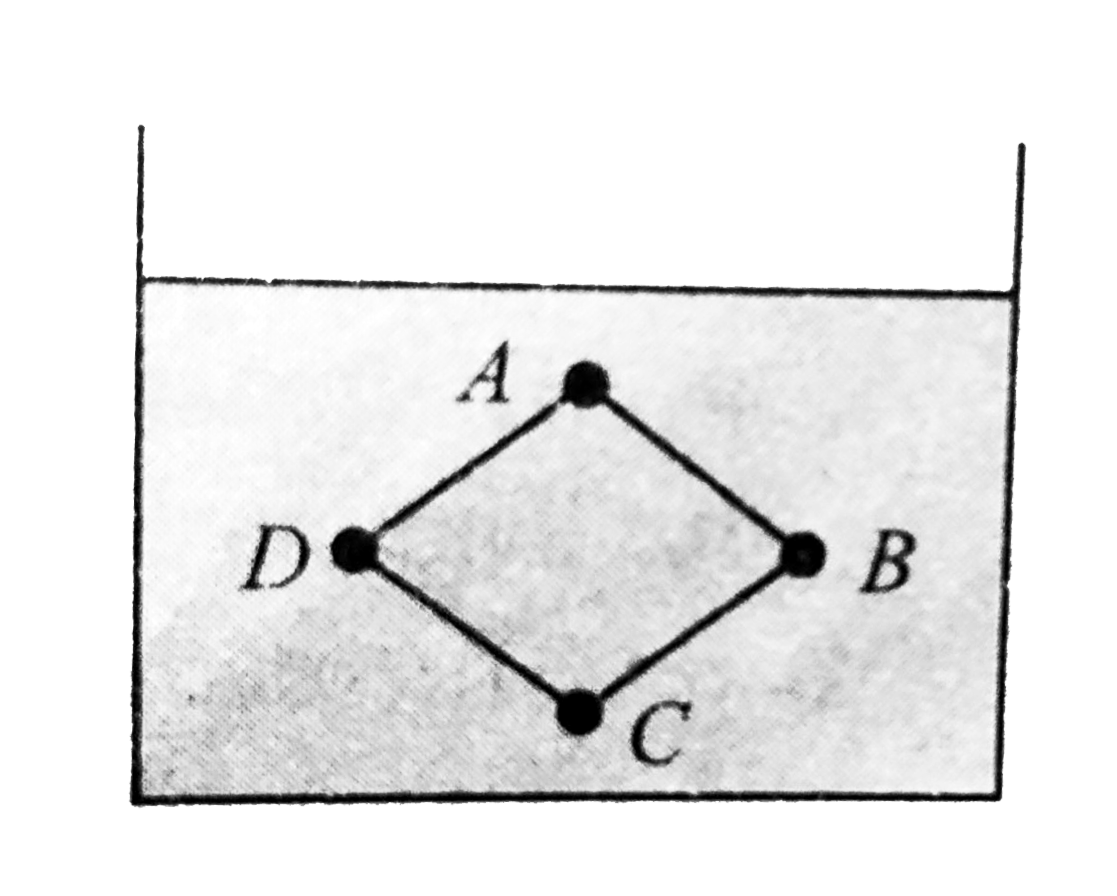Figure shows a container filled with a liquid of density ρ. Four points A,B,C and D lie on the vertices of a vertical square. Points A and C lie on a vertical line and points B and D lies on a horizontal line. Choose the correct statement(s) about the pressure at the four points.

PC=PB
PA<PB=PD<PC
PD=PB=PC−PA2
PD=PB=PC+PA2
The correct Answer is:C
Step by step video & image solution for Figure shows a container filled with a liquid of density rho. Four points A, B, C and D lie on the vertices of a vertical square. Points A and C lie on a vertical line and points B and D lies on a horizontal line. Choose the correct statement(s) about the pressure at the four points. by Physics experts to help you in doubts & scoring excellent marks in Class 12 exams.
Updated on:21/07/2023Topper's Solved these Questions
- RACEBOOK - ALLENCHAPTER - RACEEXERCISE - Basic Maths (Properties of Matter & Fluid Mechanics)(Surface Tension)
26 Videos
- RACEBOOK - ALLENCHAPTER - RACEEXERCISE - Basic Maths (Thermal Physics) (Temperature scales & thermal expansion)
13 Videos
- RACEBOOK - ALLENCHAPTER - RACEEXERCISE - Basic Maths (Properties of Matter & Fluid Mechanics)(Fluid Dynamics + Viscosity)
18 Videos
- NEWTONS LAWS OF MOTIONBOOK - ALLENCHAPTER - NEWTONS LAWS OF MOTIONEXERCISE - EXERCISE-III
28 Videos
- SIMPLE HARMONIC MOTIONBOOK - ALLENCHAPTER - SIMPLE HARMONIC MOTIONEXERCISE - Example
1 Video
Similar Questions
Show that the points A(2,1),B(0,3),C(−2,1)andD(0,−1) are the vertices of a square.
View SolutionShow that the points A(3,5),B(6,0),C(1,−3)andD(−2,2) are the vertices of a square ABCD.
View SolutionShow that the points A (5, 6), B(1,5), C(2, 1) and D(6, 2) are the vertices of a square ABCD.
View SolutionShow that the points A (5,6) B (1,5) and C (2,1) and D (6,2) are the vertices of a square ABCD.
View SolutionFigure here shows the vertical cross-section of a vessel filled with a liquid of density ρ. The normal thrust per unit area on the walls vessel at point. P, as shown, will be

View SolutionShow that the points A(5, 6), B(1, 5), C(2, 1) and D(6, 2) are the vertices of a square.
View SolutionShow that the points A(−1,−4) , B(3,3) , C(3,4) and D(−1,−3) are the vertices of a rhombus.
View SolutionShow that the points A(1,0),B(5,3),C(2,7)andD(−2,4) are the vertices of a rhombus.
View SolutionTake four distinct points, A,B,C and D no three of which are collinear.
Name the line segments.
View SolutionThe points (1,3) and (5,1) are two opposite vertices of a rectangle. The other two vertices lie on the line the y=2x+c. Find c
View Solution
